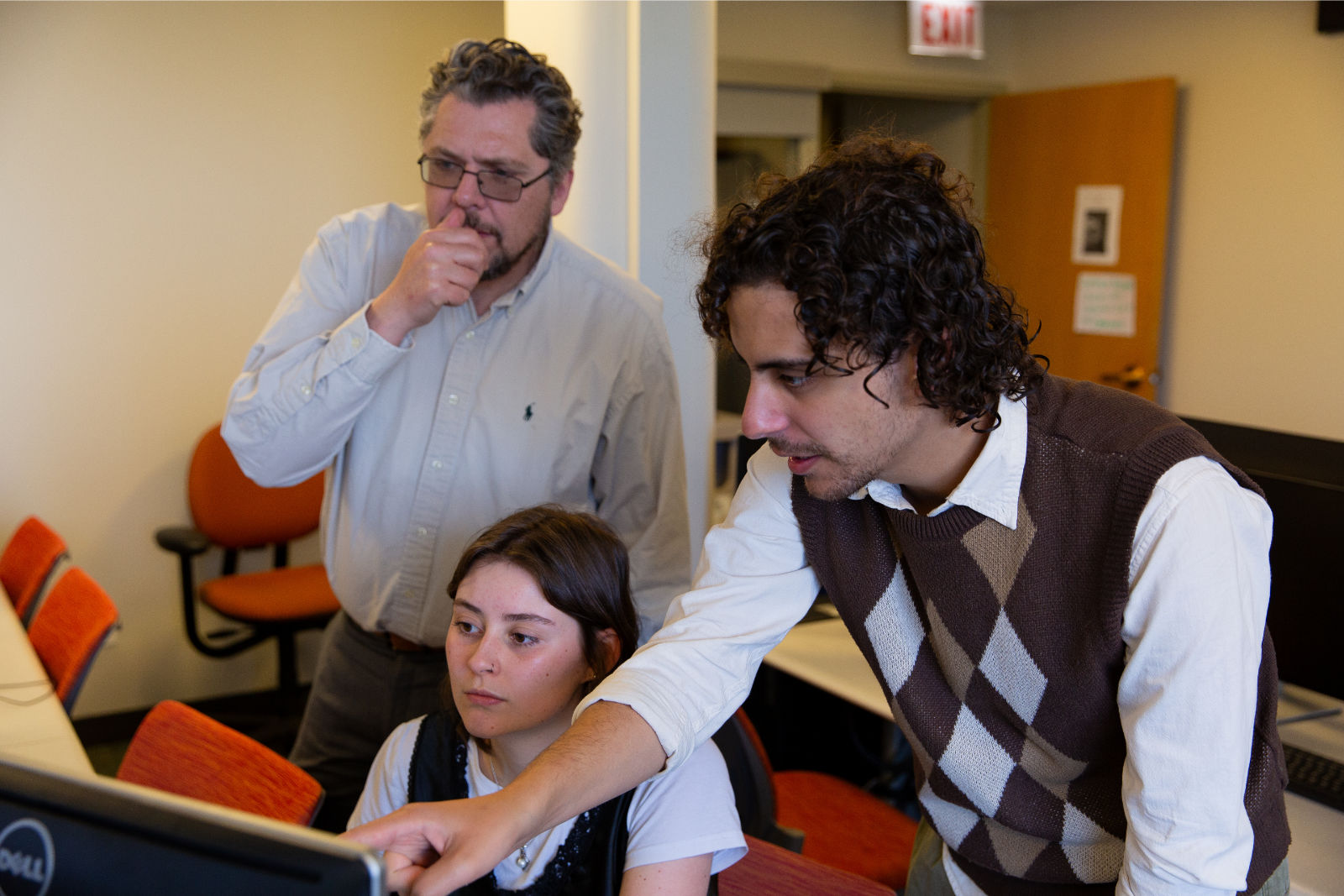 Professor Euan Hague with Student Urban Research Corps members Chris Impellizeri and Lacy Wright (Photo by Keeton Holder/DePaul University)
Professor Euan Hague with Student Urban Research Corps members Chris Impellizeri and Lacy Wright (Photo by Keeton Holder/DePaul University)When it comes to living out the Vincentian mission, DePaul’s Student Urban Research Corps members are the experts. Each year, students and faculty in the Liberal Arts and Social Sciences Urban Collaborative Program partner with local nonprofits to use their analytical skills to support and grow their operations.
“The student participants are all at different stages in their academic careers,” says
Euan Hague, professor of geography and director of the research corps. “They’ve obviously all taken a variety of different courses. But one of the things that they're able to do is learn from each other.”
Data visualization to show impact
Since 2018, DePaul University students have used their data visualization skills to support the Chicago Furniture Bank, an organization that furnishes homes for those in need.
In recent years, SURC students studying geography information systems have created interactive impact maps for Chicago Furniture Bank. This year’s
newly released map gives insight into Chicago Furniture Bank’s breadth of service across the city. Visitors to the site can explore community areas and specific donations to examine the number of recipients and their income.
Clear data visualization contributes to Chicago Furniture Bank’s mission by increasing transparency and improving grant opportunities.
"The data analytics that DePaul pulls together for the Chicago Furniture Bank is essential to the services we provide and is critically important to many of our nonprofit partners,” says Paul De Boer, executive director of Chicago Furniture Bank. “When organizations seek grant funding, the majority of the grant applications require this information, so having this data readily available saves countless hours of time and resources."
Real-world education
SURC projects benefit the community but also prioritize student learning. Senior Chris Impellizeri worked with fellow geography student Lacy Wright to develop this year’s impact map. Under faculty supervision, students take ownership of these projects and are responsible for their outcomes.
“Most of the GIS experience that I've developed has come from SURC,” Impellizeri says. “We’re getting exposure through our GIS classes, but then to put it into practice through working with community organizations was a huge benefit for my learning. I feel like it was it was invaluable to my experience.”
Impellizeri and Wright applied their GIS skills on this project, but the lessons learned spanned beyond just technical skills.
“You get a sense of what it will actually be like in the workforce,” Impellizeri says. “With a homework assignment, you do the task, you get some notes, and then you're done. But working with community organizations, there's a lot of back and forth and a lot of communication and adjustments that must be made to accommodate all these different stakeholders.”
Community collaboration
Students in the research corps can choose to work on projects throughout Chicagoland that align with their interests. Of the 16 current members, many have taken an interest in serving their community.
“I support Chicago Furniture Bank’s mission and want to work for more nonprofits and community-based organizations in the future, so being able to visualize data is a very useful professional skill to have,” says Wright, who will be the lead student on the Chicago Furniture Bank project for the 2024-25 school year.
This year alone, SURC students have completed projects with more than eight nonprofits in the Chicago area.
“It's been an incredible experience,” Impellizeri says. “I've been really lucky to be a part of it.”